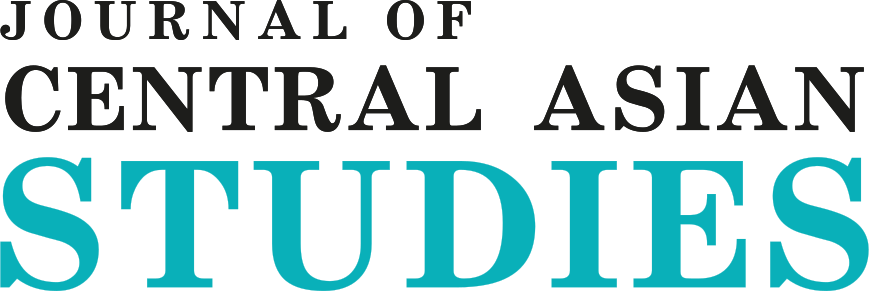Руководство для авторов
Приглашаем вас внести свой вклад в исследование журнала "Journal of Central Asian Studies" и стать частью нашего научного сообщества. Вместе мы можем способствовать более глубокому пониманию сложного социально-политического ландшафта Центральной Азии и его глобального значения.
Все заявки будут рассмотрены редакционной группой для оценки их соответствия целям в сфере применения журнала. Ваша рукопись будет рассмотрена на основе следующих критериев: уместность темы, обоснование и значимость, цель и задача, глубина понимания, критическая оценка, последовательное обсуждение идей, методы сбора и анализа данных, этические соображения, представление результатов и логический вывод, связь между концепциями и практикой, связь с предыдущими исследованиями, общие утверждения и аргументы, потенциальное влияние, а также согласованность, сплоченность, а также грамматика языка. Заявки, которые соответствуют требованиям, пройдут двойное слепое рецензирование для определения принятия, принятия с незначительной доработкой, принятия с существенной доработкой или отклонения.
Авторам рекомендуется убедиться в достоверности получения разрешения на публикацию любых материалов, в том числе на фотографии, документы и наборы данных, включенных в их заявку. Всем авторам указанным в заявке необходимо их согласие на авторство. Если в случае одобрения исследования этическим комитетом организации или института ими же необходимо предоставлять справку.
В этом журнале применяется следующая процедура подачи:
- Рукопись для журнала "Journal of Central Asian Studies" должна быть отправлена на английском языке с использованием Open Journal System, онлайн-системы подачи и рецензирования. Чтобы отправить рукопись, зарегистрируйтесь и перейдите в раздел "отправить свою статью". Автор-корреспондент должен предоставить сопроводительное письмо вместе с рукописью.
- Информация об авторах должна быть указана на отдельной странице с указанием почтовых адресов, номеров телефонов и адресов электронной почты, а также назначенного автора-корреспондента.
- Рукопись не должна быть ранее опубликована, а также не должна рассматриваться для рецензирования или публикации другим журналом. Оригинальные исследовательские статьи не должны превышать 12 000 слов, включая ссылки, и должны представлять собой всесторонний анализ или эмпирическое исследование, соответствующее тематике журнала. Обзорные статьи должны критически рассматривать существующую литературу с новой точки зрения и должны содержать от 5 000 до 8 000 слов, включая ссылки. Объем рецензий на книгу, комментариев и мнений не должен превышать 2000 слов.
Пожалуйста, убедитесь, что рукопись соответствует следующим требованиям:
- Название рукописи должно быть написано заглавными жирными буквами и выровнено по центру.
- Пожалуйста, предоставьте информацию об авторе в отдельном документе Word. Если авторов несколько, укажите соответствующего автора. Соавторство ограничено максимум четырьмя лицами. Для каждого автора должна быть предоставлена полная информация, включая полное имя, принадлежность, адрес электронной почты, страна, идентификатор ORCID и контактная информация. Полное имя каждого автора должно быть написано жирными буквами без сокращений.
- Название статьи должно точно отражать содержание и тему исследования.
- Аннотация – краткое изложение содержания научной статьи, а также характеристика с точки зрения назначения статьи, вида, формы и других особенностей. В аннотации излагаются суть и использованные методы исследования, суммируются наиболее важные результаты и их значимость. Объем аннотации составляет 200-300 слов, оформляется на трех языках (русском, казахском, английском).
- Ключевые слова – текстовые метки, по которым можно найти статью при поиске в системе Интернет, а также определить предметную область текста. Количество слов от 3 до 8, оформляются на трех языках (русском, казахском, английском).
- Введение - краткое изложение истории вопроса c обязательным рассмотрением отечественных и зарубежных работ, в которых аналогичные или близкие исследования уже проводились за последние десятилетия, формулируется цель исследования.
- Методы исследования должны содержать подробное описание методов сбора и анализа данных, включая описания любых новых использованных методов. Если исследование включало опросы и интервью, укажите процедуры сбора данных, информацию об участниках и этические протоколы, которые соблюдались.
- Обзор литературы должен критически оценить соответствующую литературу с новой точки зрения, используя не менее 20-25 источников, если это обзорная статья. Пожалуйста, обязательно просмотрите также источники за последние пять лет.
- Результаты исследования - приводятся основные теоретические и экспериментальные результаты, фактические данные, обнаруженные взаимосвязи и закономерности. При этом отдается предпочтение новым результатам, важным открытиям, выводам, которые опровергают существующие теории, а также данным, имеющим практическое значение.
- Обсуждение результатов - производится сопоставление с лучшими отечественными и мировыми аналогами. Описываются дискуссионные моменты исследования, и ваше видение их разрешения.
- Выводы (заключение) – подведение итогов работы, обоснование новизны и актуальности исследования, рекомендации по применению полученных результатов.
- Информацию об источниках финансирования исследований, конфликтах интересов и вкладах авторов с использованием таксономии ролей авторов (CRediT) должны быть помещены перед списком использованной литературы.
- Пожалуйста, убедитесь, что внутритекстовые цитаты и ссылки соответствуют формату APA 7th edition. Подробные инструкции можно найти в официальном справочном руководстве APA 7-го издания здесь.
- Процент самоцитирований в рукописи не должен превышать 30% от общего числа ссылок.
- Все ссылки на языках, отличных от английского, должны быть представлены в принятой английской транслитерации. Это можно сделать с помощью специальной программы для транслитерации. Правильная транслитерация важна для обеспечения включения в зарубежные аналитические базы данных. В тексте рекомендуется использовать американский английский.
- Несоблюдение этих требований приведет к отклонению рукописи редакторами и возврату ее на доработку.
Требования к форматированию:
Текстовые файлы следует представлять в формате Word (версии 6.0 и более поздние).
- Шрифт: Times New Roman, размер - 14pt,
- Междустрочный интервал: 1.0 интервал, в одну колонку.
- Поля: со всех сторон – по 2 см.
Для таблиц:
- Таблицы должны быть пронумерованы арабскими цифрами и иметь описательное название.
- Численные измерения (единицы) должны быть включены в заголовок столбца.
Для графиков:
- Рисунки (графики, чертежи и пр.) выполняются в черно-белом, либо цветном цветевысокого качества.
- Рисунки должны иметь краткие заголовки, дающие точное описание к изображению на рисунках.
- Заголовки рисунков не должны размещаться на иллюстрациях.
- Независимо от типа графики, рисунки должны обладать высоким разрешением, не ниже 600 точек на дюйм.
- Максимальный размер рисунков 120 × 210 мм.
- Не использовать в статье сканированные или взятые из интернета графические материалы. Пожалуйста, убедитесь, что получено разрешение на публикацию всех фотографий, наборов данных и других материалов, предоставленных вместе с заявкой.
- В таблицах, рисунках, формулах не должно быть разночтений в обозначении символов, знаков.
- На рисунки и таблицы должны быть ссылки.
Примечание: все таблицы, графики и рисунки должны иметь надлежащую ссылку на источник.
Последнее обновление 2025-05-30




 Open content is licensed under the CC-BY
Open content is licensed under the CC-BY 